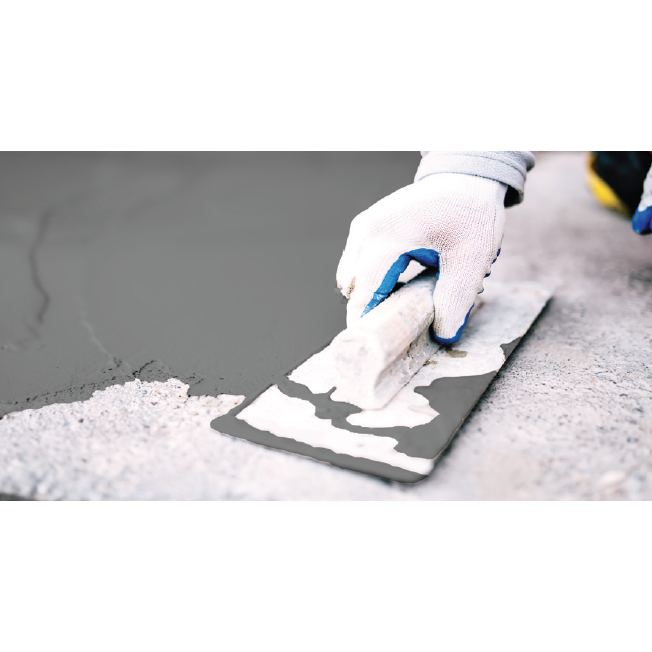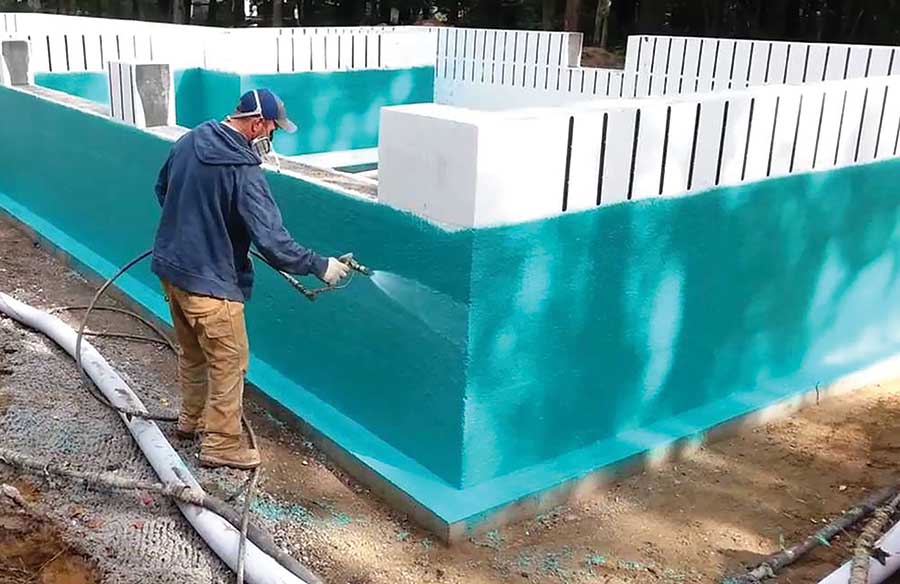Sump pump installation & replacement Omaha: What Every Homeowner Should Know
How Waterproofing Functions: An In-depth Consider Techniques and Technologies
Waterproofing is crucial for securing structures from moisture-related damages. It involves various techniques and technologies that produce barriers versus water breach. Traditional methods, such as compressed clay, coexist with modern technologies like liquid-applied membrane layers. Comprehending the nuances of these methods is vital for efficient application. However, the efficiency of any waterproofing solution pivots not only on the strategies made use of but also on continuous maintenance and assessment. What are the key factors that affect long-lasting performance?
Comprehending the Essentials of Waterproofing
Waterproofing is an important process that shields structures from water intrusion, which can cause substantial damages with time. This technique entails the application of numerous products and techniques made to produce a barrier versus dampness. The primary objective is to prevent water from penetrating surfaces, which can create deterioration, mold growth, and structural instability.Various elements influence the selection of waterproofing technique, including the type of framework, its location, and ecological problems. Recognizing the physics of water movement and the residential or commercial properties of different materials is crucial in selecting a reliable waterproofing solution.Effective waterproofing not just safeguards buildings yet also improves their longevity and honesty. Usually, it is integrated into the design stage of construction to ensure thorough security. As understanding of water-related concerns expands, the value of comprehending waterproofing fundamentals ends up being increasingly clear to designers, building contractors, and homeowner alike.
Typical Waterproofing Approaches
Typical waterproofing methods have actually been made use of for centuries, relying on time-tested techniques and products to safeguard frameworks from water damage. Among the oldest methods entails using clay, which, when compacted, creates a natural barrier versus dampness. In addition, bitumen, a sticky, black product originated from petroleum, has been utilized for its water-resistant residential properties, usually put on roofs and foundations.Another method involves the application of lime-based plasters, which supply a breathable layer that permits wetness to get away while protecting against water access. Thatch roof covering, a traditional technique still seen in some cultures, provides excellent waterproofing due to its snugly loaded straw layers.Moreover, using rock and brick has actually projected, as these products are inherently immune to water when properly installed. Generally, standard waterproofing approaches highlight the relevance of selecting proper materials and building and construction methods to improve durability versus water intrusion.
Modern Waterproofing Technologies
Innovations in contemporary waterproofing innovations have reinvented the means frameworks are safeguarded from water damage. Cutting-edge strategies such as liquid-applied membranes and innovative sealants have boosted the efficiency and adaptability of waterproofing solutions. These modern technologies enable for smooth application, reducing the risk of leakages and making certain extensive protection over complex surfaces.Moreover, the assimilation of smart innovations, such as wetness sensing units and automated tracking systems, enables real-time evaluation of waterproofing efficiency. This aggressive technique promotes prompt upkeep and minimizes long-lasting fixing costs.Additionally, advancements in spray-applied coatings provide quick application and exceptional attachment, adapting to different substratums while providing durable protection. Methods like polymer-modified systems further improve versatility and longevity, making them ideal for diverse environments. In general, contemporary waterproofing innovations not only mitigate water intrusion yet likewise add to the durability and sustainability of frameworks, marking a significant shift in the sector.
Products Utilized in Waterproofing
The efficiency of waterproofing options heavily relies on the products used in their application. Numerous products are utilized to develop barriers versus water access, each with one-of-a-kind residential properties suited for different settings. Typically made use of products consist of membrane layers, layers, and sealants.Liquid-applied membranes, frequently made from polyurethane or acrylic, develop a smooth barrier that adjusts to complicated surfaces. Sheet membrane layers, commonly built from rubber or thermoplastic, deal sturdiness and are ideal for larger areas. Additionally, cementitious waterproofing products, made up of cementitious substances, offer superb attachment and flexibility.Sealants made from silicone or polyurethane are important for joints and joints, guaranteeing thorough protection. Sophisticated products, such as geo-composite membrane layers, incorporate several features, improving efficiency. On the whole, the choice of waterproofing materials is vital in achieving long-lasting and reliable water resistance, customized to particular project demands and environmental conditions.
Usual Applications of Waterproofing
Waterproofing plays a vital function in different sectors, guaranteeing the durability and integrity of structures. Usual applications include household options that shield homes, business framework that safeguards organizations, and commercial settings that require durable protection against moisture. Comprehending these applications highlights the significance of waterproofing in maintaining both safety and security and functionality across different environments.
Residential Waterproofing Solutions
Many home owners encounter challenges with wetness invasion, making effective residential waterproofing services essential. Various approaches exist to resolve this problem, consisting of inside and outside waterproofing systems. Interior solutions often entail the application of sealers and finishes to cellar wall surfaces, which help avoid water seepage. Outside methods commonly include the installment of drainage systems and water resistant membrane layers that divert water far from the foundation.Additionally, property owners may take into consideration sump pumps to remove water build-up and dehumidifiers to regulate moisture degrees. Correct grading and making use of seamless gutters likewise play a vital function in managing water flow around the home. By carrying out these strategies, house owners can considerably minimize the risk of water damage and mold and mildew development, guaranteeing a dry and secure living environment.

Commercial Framework Defense
Efficient waterproofing options play an essential role in the security of business framework. French drain installation Omaha. These methods are essential for protecting structures, parking frameworks, and bridges from water damages, which can compromise architectural stability and cause expensive repair services. Usual applications consist of the installation of membranes, coverings, and sealants that create barriers against wetness infiltration. Locations such as cellars, roofing systems, and exterior wall surfaces are usually prioritized to ensure durability and toughness. In addition, waterproofing systems can enhance energy effectiveness by stopping water-related problems that might bring about mold development and deterioration. By applying robust waterproofing actions, residential or commercial property owners can click this shield their financial investments and maintain operational like this performance, eventually adding to the overall sustainability of business centers
Industrial Applications Introduction
While numerous sectors deal with distinct difficulties, the requirement for reliable waterproofing options continues to be a continuous in industrial applications. Industries such as manufacturing, building and construction, and power frequently run into settings where moisture direct exposure can threaten structural honesty and functional effectiveness. In producing centers, waterproofing is vital for safeguarding equipment and materials from water damages. In building and construction, it safeguards foundations and basements against groundwater infiltration. The energy industry counts on waterproofing for the security of equipment in hydroelectric plants and offshore frameworks. Furthermore, food handling markets utilize waterproofing to ensure health and conformity with security standards. Generally, efficient waterproofing remedies are necessary for boosting longevity, security, and efficiency across numerous commercial settings.
Maintenance and Longevity of Waterproofing Solutions
Although waterproofing solutions are made to supply long-lasting protection versus wetness intrusion, regular upkeep is necessary to ensure their effectiveness and long life - Water Solutions. Regular evaluations play a significant function in recognizing prospective concerns such as cracks, peeling, or indicators of water damage. Resolving these troubles quickly can protect against further wear and tear and expensive repairs.Additionally, cleansing the surface of waterproof locations helps eliminate dust and particles that can jeopardize the honesty of the waterproofing barrier. It's also a good idea to reapply safety finishings or sealers as advised by makers to maintain optimal efficiency. Ecological variables, such as UV exposure and extreme weather, can influence the life-span of waterproofing products, making regular assessment important
Often Asked Inquiries
Can Waterproofing Be Applied in Winter?
The inquiry of applying waterproofing in winter elevates problems about adhesion and curing. Several basement water leak repair products may not perform at their best in low temperatures, requiring cautious choice and factor to consider of details standards for reliable application.
How Much Time Does Waterproofing Typically Last?
The duration of waterproofing effectiveness varies based on materials and environmental factors. Generally, it can last from 5 to 10 years, yet routine upkeep and inspections are important to guarantee peak efficiency and long life.
Is DIY Waterproofing Effective and Safe?
The efficiency and safety of do it yourself waterproofing depend on various variables, consisting of worldly quality and application technique. While some people accomplish satisfactory results, others might come across problems that compromise lasting security and structural integrity.
What Are the Signs of Failing Waterproofing?
Signs of falling short waterproofing include visible water discolorations, peeling paint, mold and mildew development, moldy odors, and dampness in wall surfaces or ceilings - Water Solutions Omaha. These indicators recommend compromised obstacles, necessitating punctual assessment and potential removal to avoid more damage
Just how Do I Select the Right Waterproofing Service Provider?
